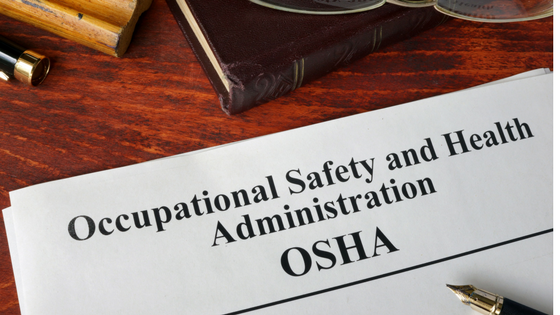OSHA inspectors take an active role in preserving the health and life of American workers. They ensure working conditions are not unduly dangerous and that workplace incidents are reduced. These inspectors are responsible for workplace inspections.
OSHA in the News
When the House Appropriations’ Labor, Health and Human Services, Education and Related Agencies Appropriations Subcommittee met in early April 2019, U.S. Secretary of Labor Alexander Acosta made a written request for additional funding for OSHA, per the request of President Donald Trump. There’s a total ask of $557 million for fiscal 2020, which is an increase over fiscal 2019 budget. At least some of this funding will pay for additional staff to include compliance officers and investigators to handle whistleblower reports.
Acosta also reported to the committee that a new cohort of OSHA inspectors would be entering the field. He said 76 inspectors were brought on board in fiscal 2018, and newly hired inspectors receive 1-3 years of training. Once these new inspectors begin working in the field, the number of inspections is expected to rise. Most recently, the agency carried out approximately 32,000 inspections in 2017 and 2018. This is an increase over the previous year’s number of inspections.
The Trump administration did away with the practice of public press releases that called out companies with safety violations after inspections were completed. Instead, there was a shift toward fostering collaborative relationships with employers through public statements after inspections; federal contractors are urged to call on OSHA for assistance in developing policy and procedures to avoid violations. While approach may have softened in appearance, penalties for violations remain unchanged.
What Exactly Is an OSHA Inspection?
OSHA inspectors are responsible for seven million worksites across the country. These inspectors are experienced in industrial hygiene and workplace health and safety, and they have extensive training on OSHA regulations. Their job is to assess an employer’s compliance with these rules and note violations, some of which carry penalties and fines. Ideally, their goal is to reduce workplace illness and injury through reduction or elimination of hazards. OSHA inspectors are bound to keep details about any proprietary information or processes they see or hear confidential, and they’re expected to carry out their jobs with minimal disruption of a worksite’s operations.
Unannounced inspections are possible. Still, they must be during normal work hours. Employers can request that officers show inspection warrant before allowing access. Inspections are generally handled in priority according to risk. Highest priority cases are those with imminent danger. These require immediate action from the employer to fix the problem or remove the employees for their own safety; these are instances where people could be seriously injured or killed on the job.
Severe injury/illness cases are next in line. These include incidents of work-related deaths and illnesses or injuries that require in-patient hospital care or loss of a limb or eye; these incidents must be reported to OSHA by the employer within 24 hours of occurence. OSHA also handles employee complaints, including anonymous complaints, as well as referrals about workplace health and safety from other, non-employee sources such as federal agencies, outside parties or the media, for example. Targeted inspections are done for high risk worksites, whether that elevated risk is due to type of industry or an employer’s past record of workplace injury and illness incidents. And finally, OSHA carries out follow up inspections to ensure that any violations are addressed and corrected appropriately.
What to Expect During an Inspection
While OSHA investigators can gather info by telephone, email or fax, many inspections are on-site and in-person. To prepare, inspectors review available information and files related to the employer and the industry. The inspector collects any necessary safety gear or testing equipment to do a full evaluation. When the inspector arrives on site, they will present the inspection request and an OSHA ID with their name and serial number.
For example, Bob, an OSHA inspector, begins with an introductory meeting where he gives an overview of the inspection process and explains why he’s there. The employer designates an employee to accompany Bob. He may meet privately with several individual employees, too, during the course of his inspection. He will walk through the site, evaluate and assess working conditions for violations, and review workplace records related to on-the-job illness and injury. Bob will also check for OSHA posters and other postings of required compliance information. While he may point out immediate fixes while doing a walk around, the inspector will go over his observations and remedies during his closing conference with the employer. Depending on the circumstances, observations may lead to citations, penalties, and fines.
What You Can Do
One of the best ways to prepare for an OSHA inspection, announced or unannounced, is to keep up with new and revised OSHA regulations. OSHA's website is a reliable place to find this information. In addition, make sure all workplace injury and illness records are complete. Document workplace health and safety training policies and programs and employee participation in them; have these records accessible for the inspector. And finally, treat the OSHA inspection with appropriate gravity. Have a designated employee who can accompany the inspector, who can provide the documents the inspector may ask for, and who can answer the inspector’s questions knowledgeably.
Are you looking to streamline your OSHA recordkeeping processes? See how OSHA reporting software can help.
Further reading: 3 Ways to Lower Your TRIR
